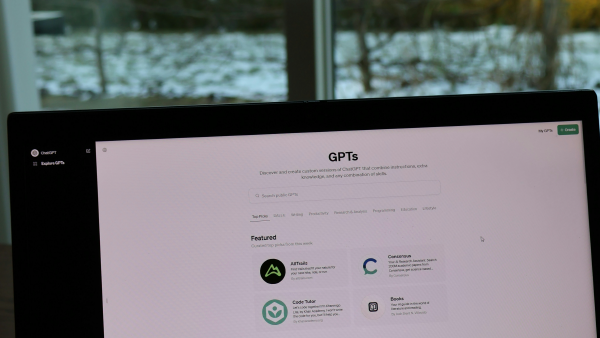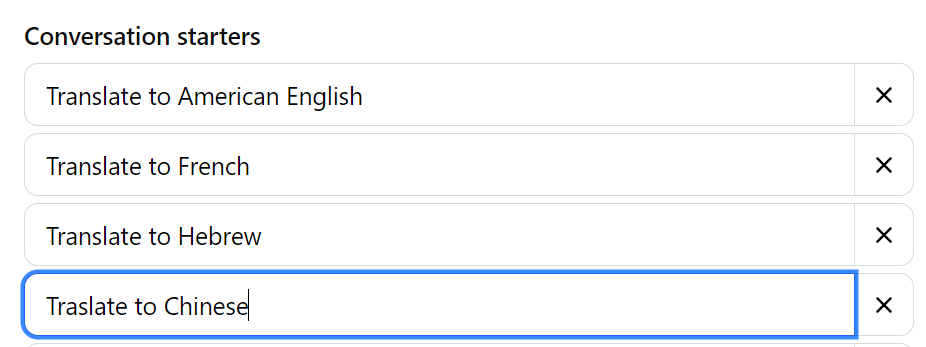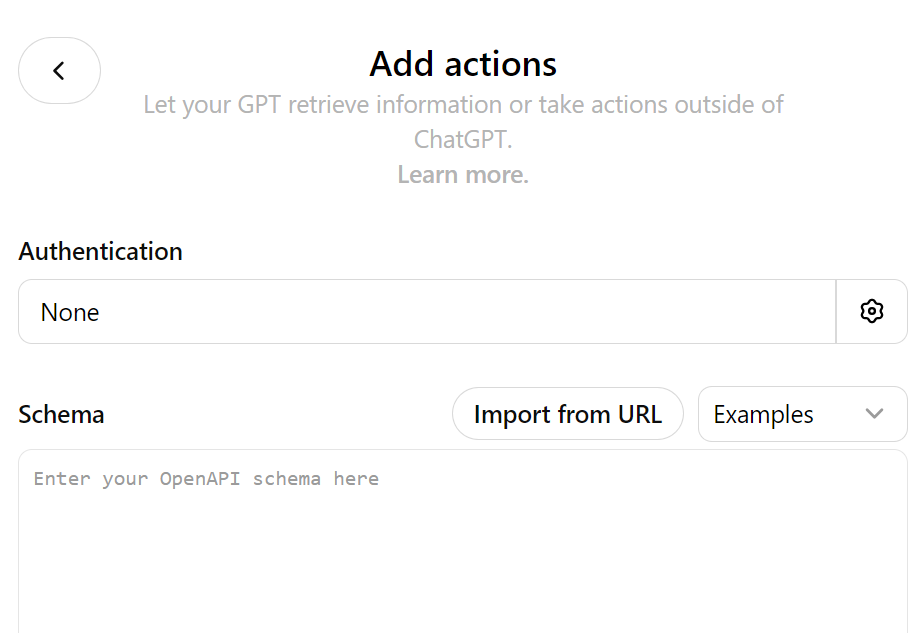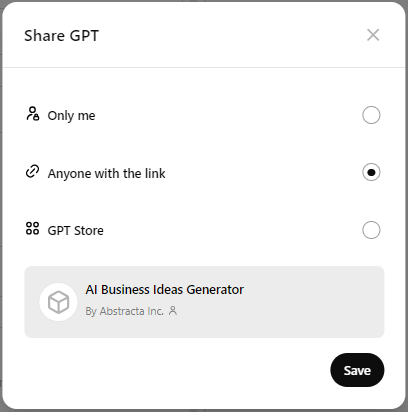Discover how to bring your Artificial Intelligence Business ideas to life using Generative AI as a core of your solutions. Join us to learn all about where to gather information, how to create a custom GPT, develop and evolve rapid prototypes, and leverage Microsoft AI Co-Innovation Labs.


By Matías Reina and Natalie Rodgers
Generative Artificial Intelligence has emerged as a pivotal force, transforming every aspect of organizations. This power is not confined to theoretical research. It’s actively shaping real-world applications, driving efficiency, and solving problems that once seemed insurmountable.
AI algorithms and AI-powered solutions are at the forefront of this transformation. How is this happening? AI-powered systems are transforming businesses allowing people to create profitable AI business ideas across various industries within the growing AI market.
From medicine, education, finances, e-commerce, construction, security, and reliable intelligent fault detection, AI is not just an academic curiosity but a practical tool for enhancing business and solving real-world problems.
In this article, we aim to guide managers and non-technical professionals on how to validate their artificial intelligence business ideas. We describe 4 steps to get a basic understanding of GenAI and how to bring your ideas to life.
Need help with AI Software Development?
Contact us to discuss how we can help you grow your business.
Validating and Implementing AI Business Ideas


Before diving into this methodology, it’s crucial to engage in a thoughtful analysis with your team at every step of the process. Ask yourselves: Is AI or GenAI truly the best fit for solving your specific challenge?
While the capabilities of GenAI are undoubtedly impressive, it’s a common mistake to try to apply it as a one-size-fits-all solution.
Sometimes, even though GenAI can address the issue, it’s essential to ensure you’re not committing overkill by deploying this advanced technology for issues that might be resolved with simpler approaches.
A Step-by-Step Guide


To effectively harness the potential of GenAI for your projects, we recommend following these steps to enable a structured and impactful approach:
1. Immerse Yourself in GenAI Knowledge
Begin by diving deep into relevant information about GenAI. This will help you understand the core concepts and spark inspiration for how it can be applied to your unique challenges.


In the quest for knowledge and inspiration, knowing where to find reliable and insightful information is half the battle.Generative AI for Dummies guide serves as a beacon for those navigating the vast ocean of Generative AI resources, to understand the general concepts and implications in this new world of Generative AI.
Natural language processing, machine learning, coding, content creation, and AI video generation tools are just a few areas where GenAI excels. Additionally, an AI writing tool can significantly enhance different processes. By exploring cutting-edge tools and key concepts, you can better position yourself in expanding your business.
For this purpose, we suggest always staying informed about the latest trends and breakthroughs in AI and engineering. Not only does this knowledge inspire innovation but it also enables your experiments to be grounded in the most current methodologies and technologies.
- Abstracta’s Insights: We strongly recommend Fabián Baptista’s Newsletter, Co-founder and member of the Abstracta Director Board.
- Academic Journals: Publications like that offer cutting-edge research and case studies.
- Microsoft: This giant has an AI Blog that shares the latest trends and news on a daily basis. We also recommend you dive into their Copilot Blog.
- Boston Consulting Group: This company shares valuable information about trends in AI.
- Online Forums and Communities: Platforms such as GitHub Discussions and GitHub Topics provide real-world advice and problem-solving techniques.
- Industry Blogs and News Sites: Websites articles on the latest AI advancements and applications.
By diversifying your sources, you boost a well-rounded understanding of AI’s potential and challenges. This knowledge fuels innovation and equips you with the insights needed to make informed decisions about your projects.
As we move forward, the next step is to try your idea as fast and cheaply as possible!
2. Engage in Swift Experimentation
Quickly experiment with tools like GPT, Gemini, or other GPT variants. This hands-on experience is invaluable for understanding the practical applications of GenAI. Sales and marketing teams can particularly benefit from these AI-powered experiments.


Experimenting with AI technologies like GPT or Gemini offers a unique advantage.
Initially, we suggest diving in with different prompts and sample data, including images and audio, by chatting with the models on platforms like OpenAI or Gemini. We recommend working with the latest models at this stage for the most up-to-date experience.
Enriched with the learnings from your chats, you could choose to wrap up the experimentation phase here. Or, you can take it a step further by creating GPTs. The leap to GPTs is significant; they are much more powerful.
Beyond just interacting with prompts, you can upload documents (up to 20), write and execute code, browse the web, and importantly, call external APIs. These actions in GPTs extend the scope of your experiment, opening up new avenues for exploration and innovation.
How to Create a Custom GPT?


Creating a GPT model within the OpenAI platform can enhance your applications by integrating advanced AI capabilities.
By seamlessly integrating these AI tools, teams can foster a culture of innovation, encouraging the exploration of new ideas and solutions for specific tasks and issues.
Here’s a concise guide on how to get started:
1. Access Your Account:
- Log in to your OpenAI account.
- Go to the “Explore GPTs” section.
2. Create New GPT:
- Click the “Create” button located in the upper right corner.
3. Configure Your GPT:
You will be directed to a setup screen.


- Click on “Configure”.
- Assign a name to your GPT.
- Create a brief description of what this GPT does.
- Provide a detailed and effective prompt about the GPT’s functionality, including context, purpose, and steps, within an 8000-character limit. Don’t forget to approach this with patience; iterate as much as necessary on the right side of the screen labeled “previews” to reach the outcomes you’re aiming for.
- Optionally, click on the + symbol and upload an image, or let DALL-E generate one automatically.
4. Create Conversation Starters
Generate brief prompts for the first iteration with the GPT to guide user interactions. We suggest adding not more than 4 because only this quantity may be visible at the moment.


5. Upload Knowledge:
- In the setup, you can upload files that the GPT will use as knowledge sources. GPTs support various file formats If you upload files, remember to enable the Code Interpreter option that is below the knowledge option (we’ll show it in the next step.)


6. Enable Features:
- Enable options that allow your GPT to navigate the web, generate images with DALL·E, and interpret code, depending on your needs.


7. Configure External Actions:
- Click on the “Create new action” button.


- Configure how your GPT can obtain information or perform actions outside of the ChatGPT interface.


Authentication Options:
- None: Select if no authentication is required.
- API Key: Choose if the external API requires an API key.
- OAuth: Opt for this if the API requires OAuth authentication for secure access.
Schema:
- Input or import the OpenAPI schema directly in the text box or from a URL. This schema details the GPT’s interaction with the external API.
- Use predefined examples like “Weather (JSON)” or “Pet Store (YAML)” as templates, which you can modify to suit your needs.
8. Bring your GPT to life
- Click on “Create” at the top right of the screen.
- You will be redirected to this screen. Choose the option that best suits you.
- Click on the “save” button.


9. Optimize as Needed
Should you encounter any performance issues or wish to refine your GPT’s output, don’t hesitate to revisit the GPT’s configuration settings. You can make adjustments to meet your requirements. Remember to save your changes to apply them.
10. Consider Sharing
Decide if you’ll keep it for personal use, share it with your team or community, or publish it on the GPT store. This choice lets you select the ideal way to use your creation, be it for personal, collaborative, or public use.
By following these steps, you will effectively set up a custom GPT tailored to your specific requirements, leveraging OpenAI’s advanced capabilities to enhance your application or service.
On this path, emphasizing security from the outset is paramount. Click here and get to know our tips for using ChatGPT safely in your organization.
3. Develop and Evolve Rapid Prototypes


Move forward by creating a Proof of Concept (POC) or, even better, a Proof of Value (POV). This step is crucial for demonstrating the feasibility and potential impact of your AI business idea.
Rapid prototyping, enabled by AI allows for the swift creation and testing. This approach is not just about speed but also about learning and adapting, embodying the principles of computer science and software engineering.
Consider these steps:
- Idea Validation: Use AI (chatGPT or Gemini) in the creative process to quickly test and elaborate your ideas.
- User Feedback: Incorporate early user feedback to refine your prototype, leveraging intelligent programming environments.
- Iterative Development: Continuously improve your prototype based on data and insights.
By embracing rapid prototyping, you can navigate the complexities of engineering projects with agility and confidence. This process accelerates development and enables the final product to meet user needs and stands the test of time, demonstrating the practical application of AI software systems.
Create Alliances
The key is to start small, learn quickly, iterate, and share knowledge with the community, enabling each experiment to be aligned with the project’s goals and user needs.
At Abstracta, in partnership with Microsoft, we built our own AI Chat that includes GPT, Claude, Llama, and multiple LLMS using this approach. Take a look at our unique approach and how we did it, enabling our own team and also other companies worldwide to experiment faster and more securely.
4. Leverage Microsoft AI Co-Innovation Labs


Finally, take advantage of the Microsoft AI Co-innovation Labs to validate and refine your prototype. These labs offer access to expert resources and advanced technologies, helping you elevate your project to the next level.
The Microsoft AI Lab stands as a testament to the power of collaboration and technology in driving AI innovation. Here’s how you can make the most of this resource.
It is available to validate your prototype with top experts across the world.
From cloud computing services to AI development platforms, the lab offers a suite of experts and tools that cater to various engineering needs.
Having partnered with Microsoft, at Abstracta we have early access to cutting-edge AI/GPT technology in an enterprise environment with data privacy, to explore its use in different challenges.
The collaborative environment of the MS lab encourages the sharing and development of reusable scientific software, which can significantly accelerate the research progress. How? By allowing scientists and engineers to build upon each other’s work rather than starting from scratch.
We invite you to read this article about how to use Generative Artificial Intelligence to empower your business.
Looking for Help with your AI Business Ideas?
We are quality partners! Empower your organization with AI software development and unlock new levels of productivity! Book a meeting with our AI experts and explore the limitless potential.


Follow us on Linkedin & X to be part of our community!
Recommended for You
Generative AI for Dummies: A Comprehensive Guide for Beginners and Beyond
New AI Chatbot: How We Built Our Own ChatGPT to Experiment Faster
Testing Applications Powered by Generative Artificial Intelligence.
Tags In


Abstracta Team
Related Posts
Leading AI Tools for Software QA
Discover our top picks for AI tools for software QA! Dive into our comprehensive review and streamline your quality assurance processes.
UX Writing: Crafting Impactful Content for Memorable Experiences
Discover why integrating UX Writing is essential to the core of your software development process.
Search
Contents
Categories
- Acceptance testing
- Accessibility Testing
- AI
- API Testing
- Development
- DevOps
- Fintech
- Functional Software Testing
- Healthtech
- Mobile Testing
- Observability Testing
- Partners
- Performance Testing
- Press
- Quallity Engineering
- Security Testing
- Software Quality
- Software Testing
- Test Automation
- Testing Strategy
- Testing Tools
- Work Culture





